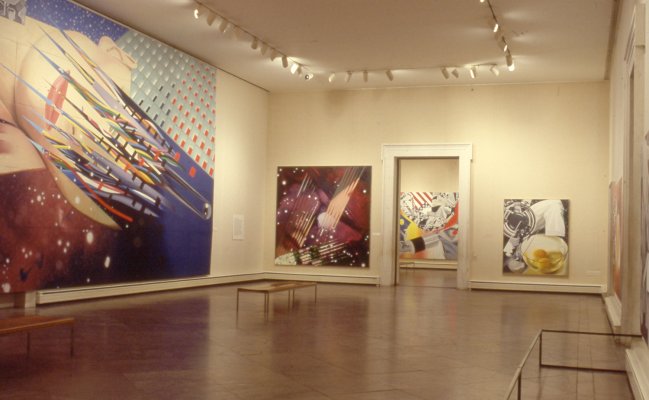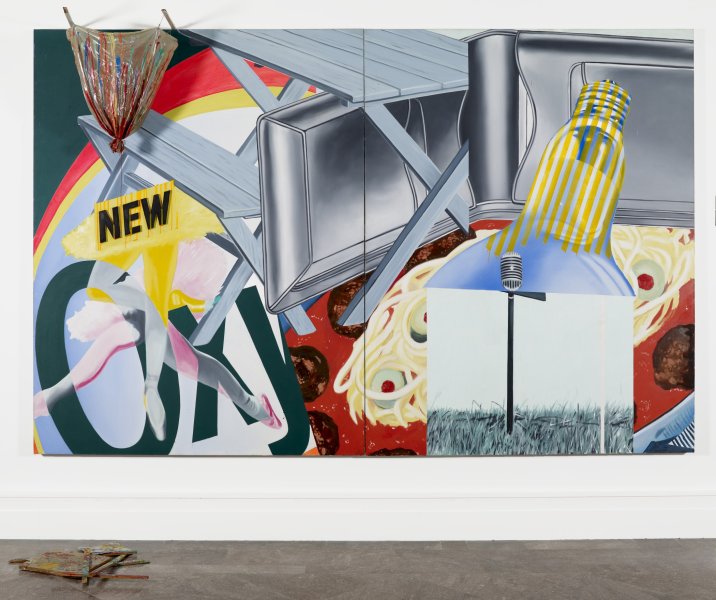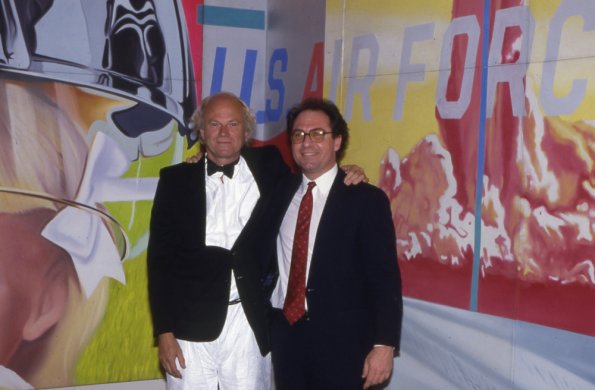James Rosenquist: Paintings, 1961–1985
Saturday, March 15, 1986–Sunday, May 4, 1986

Installation view of James Rosenquist: Paintings, 1961–1985. Photograph by Tom Loonan.
James Rosenquist: Paintings, 1961–1985, the first major retrospective of the artist's work in 15 years, features 45 paintings by one of the key figures in the development of Pop art. In these works, colorful, fragmented imagery, often appropriated from the mass media, refers to social and technological changes in contemporary society.
From his early paintings of automobiles and glamour girls to his more recent works depicting electronic and computerized technologies, Rosenquist has kept pace with the American dream. Harking back to his days as a billboard painter, the artist often spreads his abstracted images across huge expanses of canvas as he fractures familiar images and uses multiple juxtapositions to create new and unsettling relationships between the resultant forms. Technology is frequently at odds with sensuality in Rosenquist's work. His paintings reflect the myriad social and technological changes in contemporary society, and explore the artist's personal interests, perceptions, and concerns about America.
The exhibition concentrates on Rosenquist's important contributions to the Pop art movement as well as his increasingly individual work of the past decade. Consisting of 45 paintings, the exhibition at the Albright-Knox will include the three-dimensional work Nomad, 1963, from the Albright-Knox's collection; F-111, 1965, a visual study of the American turmoil of the mid-1960s; experimental work of the 1970s such as Gears, 1977, with its direct imagery and high-keyed colors; and the controversial painting commissioned for Miami's Art in Public Places program, Star Thief, 1980, which marked a resolution of themes and a shift in the direction of Rosenquist's art.
The exhibition, organized by Diane Vanderlip, curator of contemporary art at the Denver Art Museum, is accompanied by a 188-page illustrated catalogue with an essay by Judith Goldman. It began at the Denver Art Museum in Colorado, then traveled to the Contemporary Arts Museum in Houston, Texas; the Des Moines Art Center in Iowa; the Albright-Knox; the Whitney Museum of American Art in New York City; and finally the National Gallery of Art in Washington, D.C.

